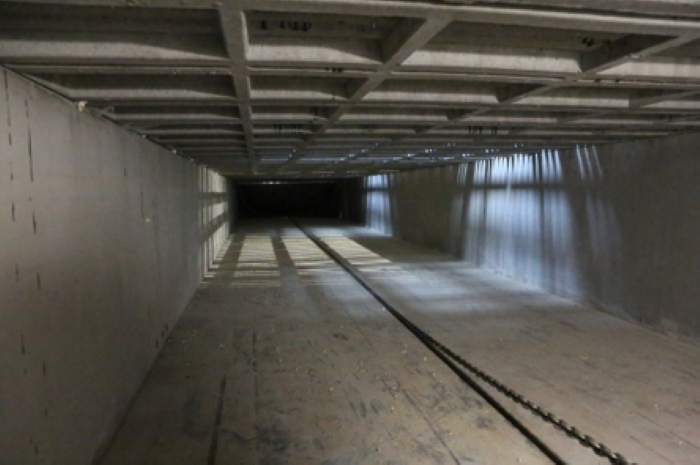- Home
- EU PiG – Reducing ammonia emissions by separating faeces and urine
EU PiG – Reducing ammonia emissions by separating faeces and urine
Faeces and urine are separated, and regularly removed, from the finisher pig housing to reduce the production of ammonia on a Belgian unit run by Akivar. The sloped floor underneath the slatted flooring directs urine so it is collected in a urine gutter, while the faeces are scraped with a newly developed scraper towards a collection pit.
Ambassador: Bart Vanackere, Belgium
Publication date: February 2020
Theme: Animal welfare
Challenges: The quality of the farm atmosphere
The air quality inside the building is better than on an average farm, so the environment for both farmers and pigs is improved.
Separating faeces and urine
Benefits
- The growth rate of piglets increased by 25%
- Finishing daily weight gain increased by 5%
-
Finishing Feed Conversion Ratio (FCR) improved by 5%
-
Veterinary costs per slaughter pig are reduced by 30%
-
Saving of €40,000/year in electricity costs – investment in mono-digester is paid back in 7 years
Costs
-
11% increase in labour costs due to the system maintenance
-
Mono-digester has an initial cost of €270,000, but there are no additional maintenance costs throughout
Separating faeces and urine in practice
A farm in Belgium set out to reduce ammonia emissions by installing a system which separates faeces and urine under a slatted floor. They began by converting a small, existing building to try the technique. In order to get a building and environmental permit, they have to provide ammonia emission data using an acknowledged measurement technique. They are also measuring odour.
A sloped floor allows the removal of collected urine to a gutter, while faeces is scraped into a collection pit. The fresh faeces is digested in an on-farm small-scale mono-digester that produces heat and electricity.
The immediate separation and removal of urine and faeces prevents the release of ammonia emissions into the barns. In addition, the removal and fast separation of urine and faeces will reduce dust and bioaerosol emissions, which will significantly improve air quality in pig housing facilities.
Initially, the farmer renovated a small existing barn to test this system. However, he was so pleased with the results he constructed a new bigger building to install the system in.
"I did not want to depend on one supplier. Instead of opting for a manure cellar in prefab concrete, I did it myself by casting a concrete floor under a slope. Afterwards, we grinded some slits and placed a manure scraper." Bart Vanackere
Case studies
Technical reports
 EU PiG
EU PiG
Manure collection pit with visible scraper chain
Animal welfare best practice challenges
Strategies for dealing with piglets from hyperprolific sows
Strategies to reduce aggression between animals
Contact us
To access more information, contact RPIG (Belgium): Laurens Vandelannoote or EUPig@ahdb.org.uk
This project has received funding from the European Union`s Horizon 2020 research and innovation programme under grant agreement No 727933.
 Government logo
Government logo

